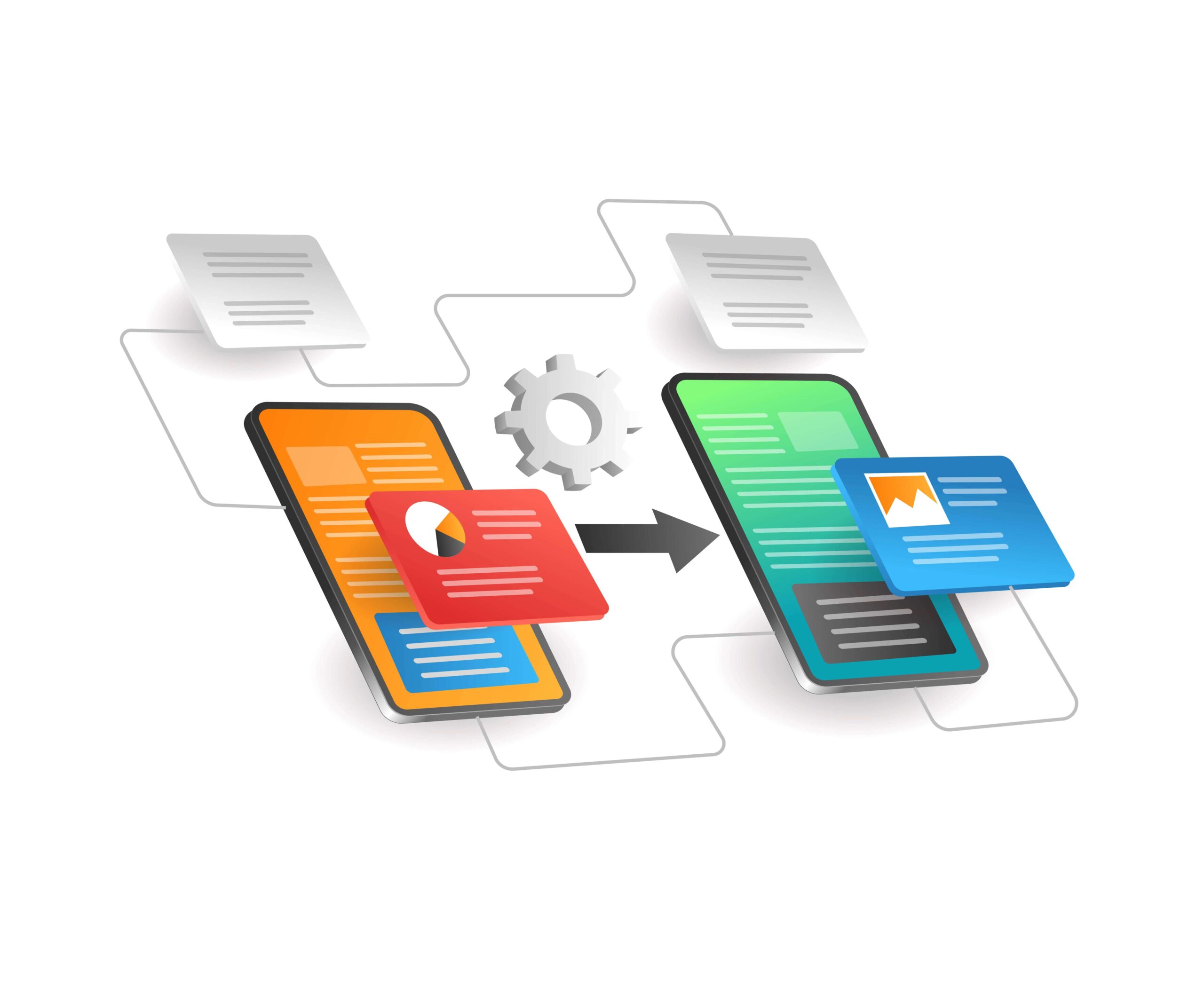With over 1 billion iPhone users worldwide, developing an iOS app is an enticing prospect for many businesses today. But with two popular options – React Native and Swift – deciding which one to use can be a head-scratcher.
On one hand, we have React Native, the cheeky cross-platform framework that gets your app up and running in no time. On the other, we have Apple’s own Swift language, specially designed to deliver lightning-fast native iOS experiences.
So, which bandwagon do you jump on? React Native’s promise of ‘write once, run anywhere’? Or Swift’s unbridled access to all the latest and greatest iOS features? Well, strap yourself in because, in this post, we’ll compare the pros, cons, and key differences between these two titans of iOS development.
By the end, you’ll have a clear sense of which option best suits your app needs and constraints. Whether you’re building the next social media sensation, a B2B enterprise app, or just experimenting with your first iOS product, you can make an informed choice after weighing how React Native and Swift fit into your plans. Sound good? Then, let’s get started!
Pros of Using React Native
Cross-Platform Code Sharing Saves Time and Money
React Native’s cross-platform capabilities allow you to reuse code across iOS and Android apps. Write your app logic once in JavaScript/React and deploy it on both platforms, reducing overall development time and costs.
Faster Development Cycles Enable Quick Iterations
React Native’s hot reloading feature enables you to view code changes instantly without rebuilding the app. You can tweak UI, logic, and styles and see updates in real-time. This accelerates development cycles.
Open Source Community Provides Support
React Native is open source with contributions from a large community. Bugs and issues get fixed quickly. There’s also a large pool of potential React native developers to hire from.
Integrates Well With Third-Party Tools
A strong third-party ecosystem provides prebuilt components and libraries for navigation, analytics, state management etc. This further speeds up app development time.
Suits Apps With Simpler UI Needs
React Native suits apps with simpler UI needs that change frequently. Complex animations and graphics may require native development.
Optimized Architecture For Collaboration
React Native’s architecture allows features to be built independently and better optimized for team collaboration.
Shorter Compile Times Than Native
Changes are visible instantly in React Native app development rather than waiting for full native compile cycles, aiding agile development.
Backed By Facebook
Facebook’s backing of React Native gives confidence that the technology will continue to be maintained and improved over the long term.
Pros of using Swift
Native Performance and UI
Swift apps have native performance, smooth animations, high FPS, and fast UI rendering out of the box. No need to rely on bridges.
Access New iOS Features and APIs
Swift lets you use the latest iOS features and APIs as soon as they are released. React Native requires waiting for bindings.
More Control Over App Experience
You have complete control over the UI and UX and can optimize the utilization of device hardware like camera, ARKit, and CoreML with Swift.
Mature Tools for Debugging and Profiling
Xcode provides powerful tools for debugging and profiling performance issues quickly during development. Critical for complex apps.
Apple’s Support and Investment
Swift is built by Apple and will remain integral to iOS development with long-term support and evolution.
Leverage Existing Cocoa Code and Libraries
You can reuse existing Objective-C/Cocoa codebases, libraries, and frameworks when building Swift apps.
High-Quality iOS Talent Pool
Established ecosystem of skilled native iOS developers well-versed in Apple’s frameworks.
Seamless Apple Ecosystem Integration
Easy integration with Apple services like PassKit, Apple Pay, Push Notifications, CloudKit, etc.
Better Protection of Source Code
Swift code is compiled to native machine code helping protect IP and prevent reverse engineering.
React Native vs. Swift: Key Differences
| Difference | React Native | Swift |
| Programming Language | Javascript | Swift |
| Access to Native APIs | Via JS bridge | Direct |
| Compilation Method | JSCore environment | Native machine code |
| Development Tools | Xcode + third-party editors | Xcode required |
| Code Reuse | Across iOS and Android | iOS only |
| Community Support | Strong open-source community | Apple official support |
| Learning Curve | JavaScript knowledge transferable | Steep learning curve |
Factors to Consider When Choosing Between React Native and Swift
Here are some factors to consider when choosing between React Native vs. Swift
App Complexity and Required Features
- Evaluate if your app needs complex UI, animations, graphics, etc, which may benefit from Swift’s native capabilities.
- Assess required platform access, e.g., hardware and OS integration to help choose Swift or React Native.
Available Developer Skills and Resources
- Consider your team’s existing knowledge and experience with Swift or JavaScript/React Native.
- Factor in the availability of iOS developers for each skill set in your location.
Performance Needs
- Swift is better for apps needing high-performance graphics, animations, gaming capability, etc.
- React Native may be suitable for simpler UI needs and flat designs.
Access to New iOS Features and Hardware
- Swift provides immediate access to new iOS features and hardware capabilities.
- React Native requires waiting for JavaScript bindings to expose new native features.
App Longevity Considerations
- Swift apps can better leverage future iOS advancements over the long term.
- React Native depends on the community to keep up with new features.
Timeline and Budget
- React Native can allow quicker initial development but may incur long-term maintenance costs.
- Swift demands more upfront investment but streamlines long-term iOS app evolution.
Recommendations
Here are the recommendations depending upon the certain factors you should consider while choosing between react native and Swift for iOS.
For Simple Apps, React Native Offers Speed
If you need to build a relatively simple app with a flat UI quickly, React Native allows you to get it to market faster across multiple platforms.
For Complex iOS Apps, Swift Shines
If you need to build a complex, high-performance mobile app development taking advantage of native features, Swift is likely the better choice.
Evaluate Native vs Cross-Platform Tradeoffs
Carefully assess whether your app goals and constraints call for the benefits of native development or cross-platform code reuse.
Factor in Available Skillsets and Resources
Play to your team’s strengths and factor in the availability of iOS developers in each technology when deciding.
Consider Long-Term Maintenance
React Native can allow faster initial development but weighs the long-term costs of maintaining cross-platform code. As the React Native version changes, some libraries get deprecated, therefore, developers need to keep it updated.
Set Realistic Timelines
Schedule sufficient timeframe for quality Swift development and testing to avoid technical debt.
Think Beyond Immediate App Scope
Anticipate if native access to emerging iOS features may be key for future iterations.
Conclusion
Analyze your specific app needs, timelines, resources, and business goals to make the right React Native vs. Swift decision. There are great reasons to choose either technology, depending on your constraints and priorities.


